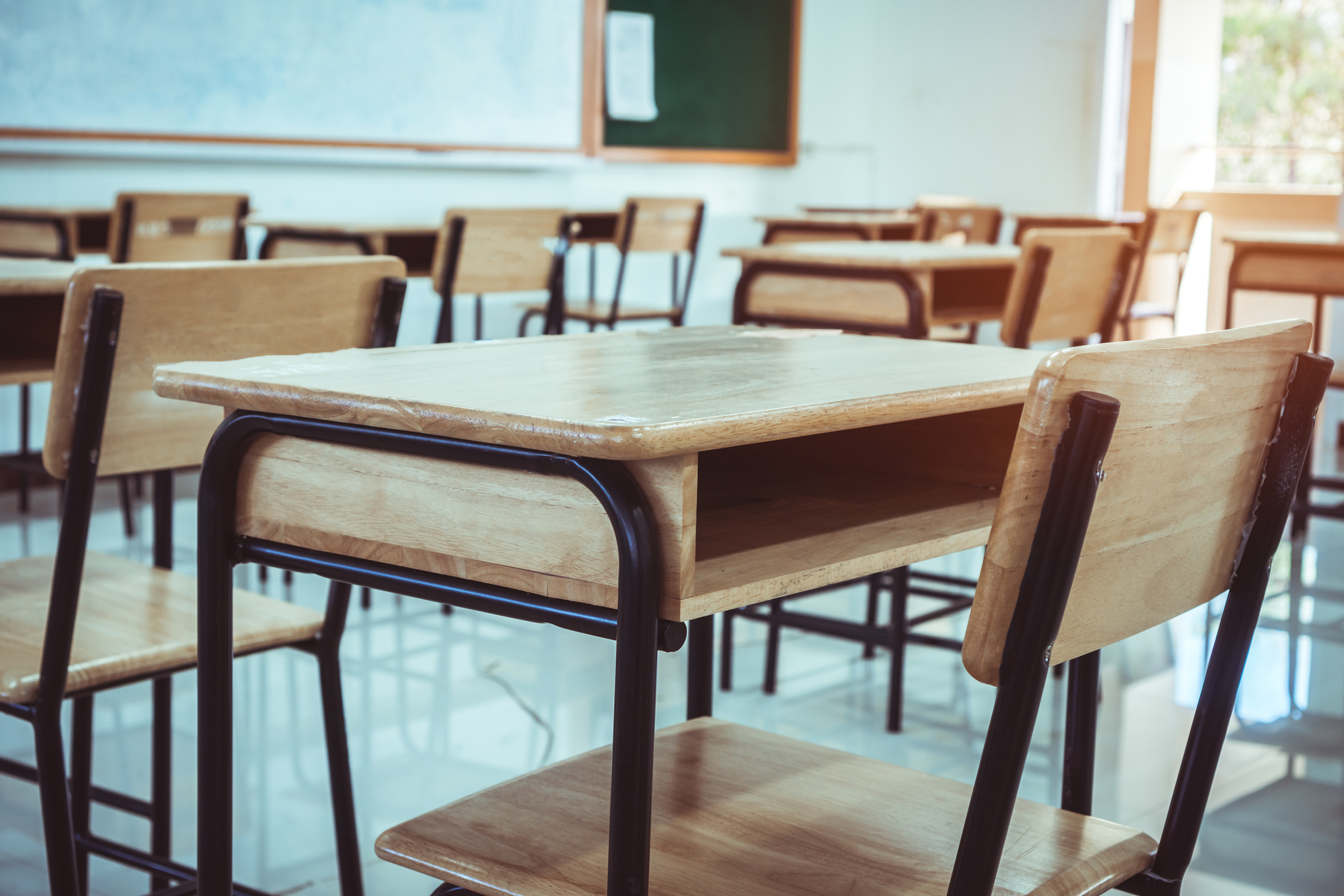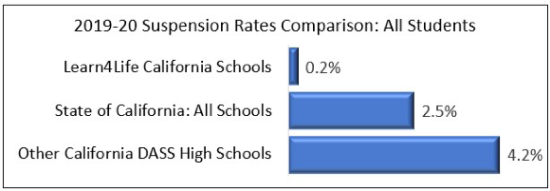Learn4Life’s school suspension rates are low because symptoms of trauma are treated with additional supports, not as a disciplinary issue

LOS ANGELES (July 13, 2021) – While student suspensions have decreased slightly in recent years, there still are too many kids losing valuable school days, especially students of color who are suspended at much higher rates¹. Studies show that students in schools with higher suspension rates experience negative short- and long-term impacts on their education and are more likely to be arrested and incarcerated as adults.
A recent report by the UCLA Civil Rights Project raises the question of how we will close the achievement gap if we don’t close the discipline gap. Black students lost 103 days per 100 students enrolled, compared to only 21 days their white peers lost due to out-of-school suspensions. In addition, test scores for Black and Latino students in California are not improving at the same rates as for white students.² With the instructional loss students have suffered due to COVID-19, educators should make suspension a last resort when disciplining students.
Click to tweet: Studies show that students in schools w/ higher suspension rates experience negative short & long-term impacts on their education AND are more likely to be arrested and incarcerated as adults. #AchievementGap #DisciplineGap #RethinkDiscipline
“It’s time to stop treating symptoms of trauma as disciplinary cases,” said Caprice Young, national superintendent serving Learn4Life, a network of 80+ charter high schools that focuses on at-risk students and former dropouts. “We have a very low suspension rate of just 0.2 percent in our California schools for the 2019-20 school year. Compare that with the suspension rate of 2.5 percent reported by California schools, and 4.2 percent by Dashboard Alternative School Status (DASS) schools that serve high-risk students.”

While the percentages sound small, Young said other schools in the state enforced 233,753³ suspensions during the 2019-20 school year. Even though the Learn4Life student population mostly comprises at-risk youths, only 49 out of 29,052⁴ were suspended in the same school year.
“Instead of suspending students, let’s work to understand their challenges,” Young said. “We see behavior problems as cries for help and handle them with a restorative justice discipline approach, which fosters belonging over exclusion, social engagement over control and meaningful accountability over punishment. Our staff teaches students life skills like conflict resolution, anger control and resiliency.”
Learn4Life incorporates restorative justice which based on respect, responsibility, relationship-building and relationship-repairing. The schools use mediation and consensus rather than punishment, allowing students to take responsibility for their actions, understand the consequences and have an opportunity to redeem themselves.
For more information about Learn4Life and its education model that includes personalized learning, one-on-one attention, a trauma-informed approach and wraparound services, visit www.Learn4Life.org.
[²] Educational Opportunity in the U.S.
[³] California Department of Education
[⁴] The California School Dashboard
